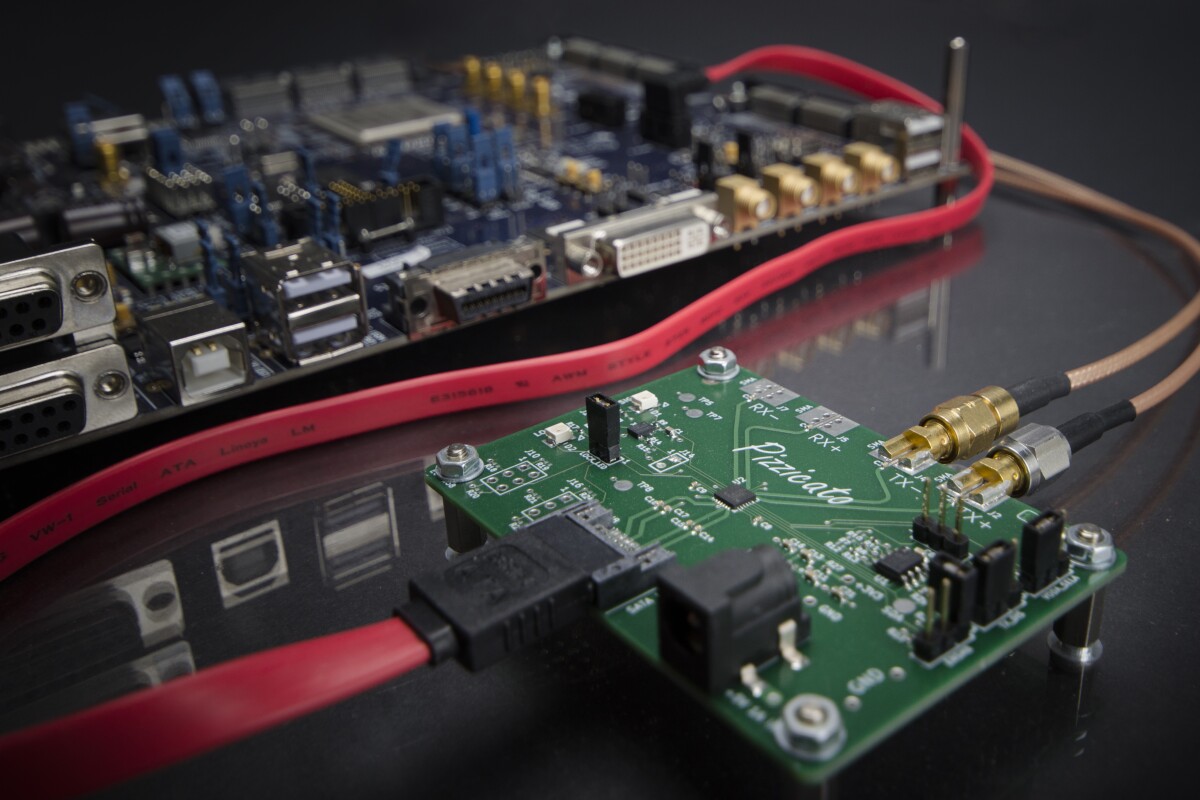For the first time in history, a prototype radio has been created that is claimed to be completely digital, generating high-frequency radio waves purely through the use of integrated circuits and a set of patented algorithms without using conventional analog radio circuits in any way whatsoever. This breakthrough technology promises to vastly improve the wireless communications capabilities of everything from 5G mobile technology to the multitude devices aimed at supporting the Internet of Things (IoT).
The significance of this new technology cannot be overstated: Every aspect of radio frequency generation is said to be created using a string of digital bits, and nothing else. There are no analog circuits, no filters, no chokes, none of the traditional circuitry and components expected in a radio transmitter. Consisting of a mere handful of components, including a couple of integrated circuits, an antenna, and not much else, the transmitter – dubbed Pizzicato – promises to change the face of wireless transmission.
Created by Cambridge Consultants, the initial trials of the Pizzicato have been claimed to show that it has fully met all the expectations of its myriad performance requirements. But more than this, the Pizzicato has brought bulky radio circuits down to microprocessor levels, with the promise of even smaller, more efficient uses of the technology in future.
"Our first trial of the technology has created 14 simultaneous cellular base station signals," said Monty Barlow, director of wireless technology at Cambridge Consultants. "But it is the potential which is so exciting. Like mainstream microprocessing, a Pizzicato-based radio would directly benefit from Moore’s Law – shrinking in cost, size and power consumption with each new generation of silicon fabrication."
In recent years, as ever more users move on to mobile broadband and devices bound for the IoT come on line, electronics designers have sought ever greater improvements in the data rates that can be jammed into channels on the wireless spectrum. However, the limits of what can be achieved using analog circuits or even the more advanced analog-digital amalgams used in software-defined radio (SDR) are rapidly approaching their useful limits.
In addition, the limited availability of radio spectrum bands, particularly in the more popular lower frequency ranges (less than 1 GHz), is being exacerbated due to their popularity. That is, with the lower frequencies ability to travel further distances or pass more easily through walls and other solid objects being far greater than that of higher frequencies, they provide more reliable and consistent connections for users, therefore making them much more desirable for wireless equipment manufacturers.
One way to improve efficiencies at these frequencies is the employment of dynamic switching capabilities to sense the radio environment and switch various settings as required, in real time. In other words, by using a type of "cognitive wireless" technique to intelligently control the way that signals are sent and received and, therefore make maximum use of the available spectrum.
According to Cambridge Consultants, this could potentially open up access to a larger proportion of the estimated 90 percent of the lower-frequency spectrum that is largely unused at any one time.
This may be achievable at low frequencies, however higher frequencies of 10 GHz and above increasingly require a range of beam-forming and meshing techniques (such as those used in aircraft data links) along with other methods of signal improvement to help improve their intrinsic lack of range. This is where the Pizzicato may prove its mettle, especially over the traditional analog parts of conventional radio technology.
"If we’re going to get high-speed broadband to every mobile phone in the world, we’ll need lots of tiny, high-performance radios in those phones," said Barlow. "The radios will be squashed together in a way that analog just doesn’t tolerate. Whereas a Pizzicato-like digital radio can follow Moore’s Law to smaller size and lower power consumption. It could also be programmed to generate almost any combination of signals at any carrier frequencies, nimbly adapting its behavior in a way that is impossible in conventional radios. It is early days for this technology, but we believe radio design has reached a turning point."
No announcement has been made regarding the commercial release of this technology.
The Pizzicato digital radio was recently demonstrated at the Mobile World Congress in Barcelona.
Source: Cambridge Consultants




